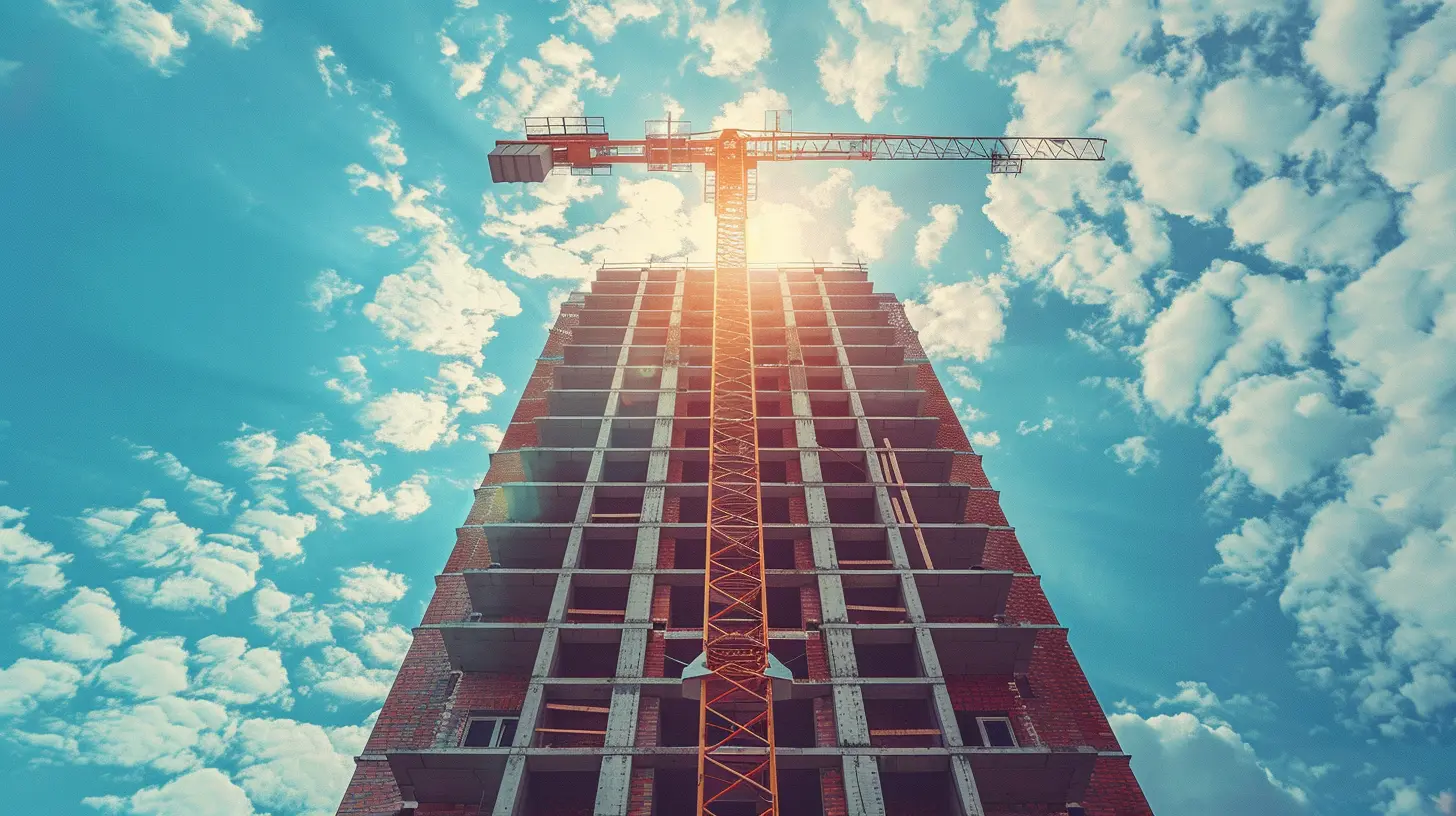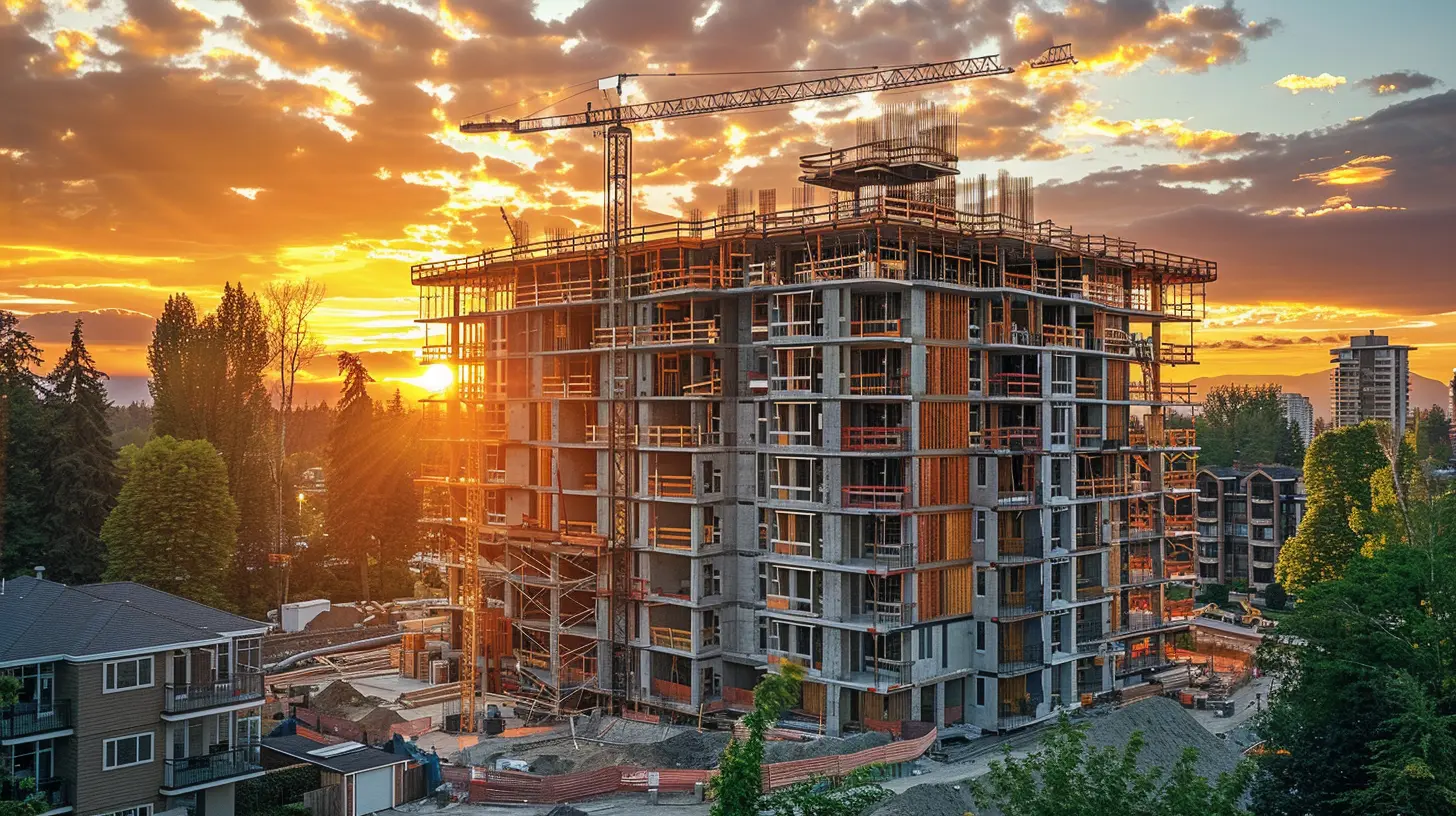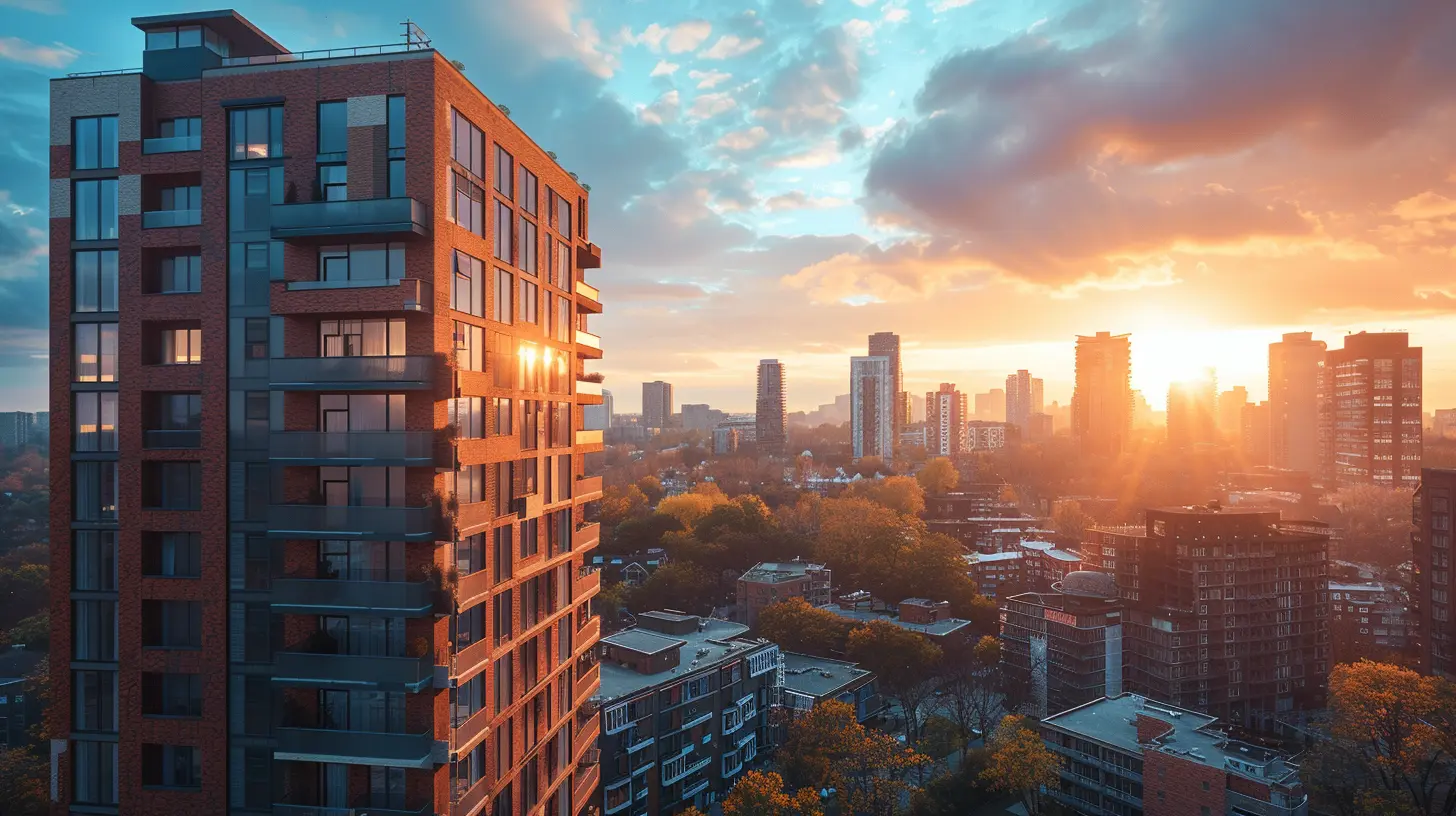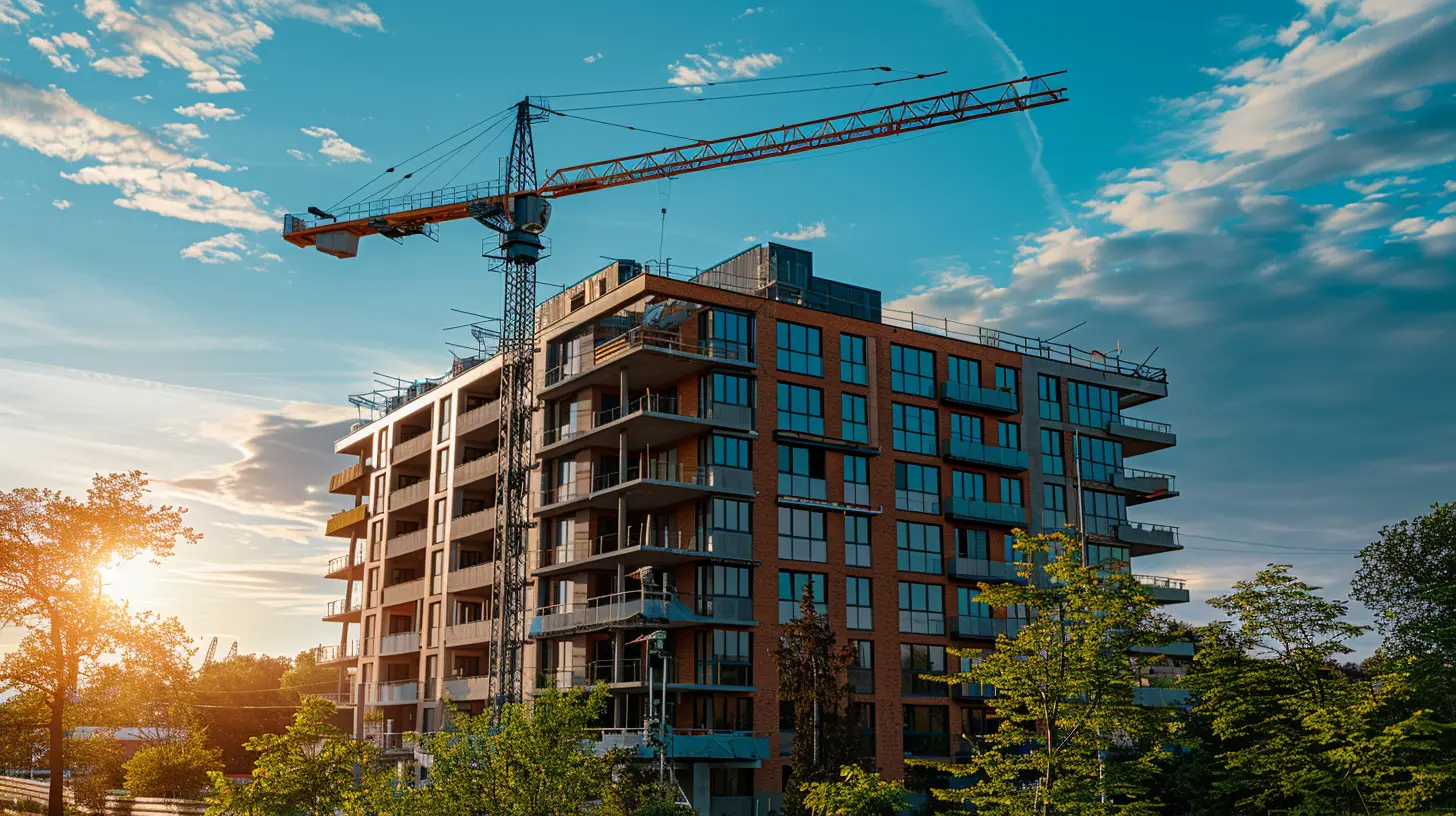Building Higher with New Construction: A Look at Multi-Story Developments
22 December 2024
When was the last time you gazed at a city skyline and marveled at the towering buildings? It’s a sight many of us take for granted, but behind those sleek facades lies an incredible story of innovation, engineering, and problem-solving. Multi-story developments are reshaping our cities, offering solutions to population growth, urbanization, and environmental sustainability. Let’s dive deeper into this vertical revolution and see how it's transforming the way we live, work, and play! 
Why Go Vertical?
Have you ever wondered why cities are building higher instead of sprawling outward? It’s all about space — or rather, the lack of it. Urban areas are bursting at the seams, with little room to expand horizontally. So what’s the solution? Go up! This is where multi-story developments shine.Addressing Land Shortage
Picture this: a city is like a dinner plate, and there’s only so much food you can pile on it. When the plate gets full, adding layers is the only way to satisfy everyone at the table. Multi-story developments maximize the use of limited land by stacking apartments, offices, and retail spaces on top of one another.This strategy is particularly important in population-dense cities like New York, Tokyo, or Mumbai, where land prices are through the roof! By building higher, developers can make better use of expensive real estate while accommodating more people and businesses.
Urbanization and Its Challenges
Urbanization is no longer a trend; it’s a reality. Every day, millions of people move to cities in search of opportunities. But this surge in population poses a challenge: where will everyone live and work? Multi-story developments are the answer.These tall buildings cater to diverse needs — from luxury penthouses to affordable apartments, sleek office spaces to buzzing retail hubs. They act like mini-ecosystems, bringing together different aspects of modern life under one roof. 
The Evolution of Multi-Story Construction
We didn’t wake up one day and decide to build skyscrapers. This architectural trend has been decades in the making, driven by advancements in technology, design, and materials.From Brick to Steel and Beyond
Back in the day, buildings were made of brick and mortar, which limited their height. After all, you can only stack so many bricks before the structure becomes unstable. But then came steel — the game-changer.Steel frames allowed architects to think big (literally), paving the way for towering structures like the Empire State Building. And now? We’ve moved even further with materials like reinforced concrete and lightweight composites that make modern skyscrapers taller, stronger, and more efficient.
Smart Construction Technologies
Construction isn’t just about bricks and beams anymore; it’s about brains, too. Smart technologies, like Building Information Modeling (BIM), are revolutionizing how we design and construct multi-story developments.BIM creates a digital twin of a building, allowing architects, engineers, and contractors to collaborate seamlessly. It’s like having a crystal ball that shows you how every pipe, beam, and electrical wire fits together before a single brick is laid.
And let’s not forget about 3D printing! This futuristic tech is making it possible to create complex building components with precision and speed. 
Benefits of Multi-Story Developments
Now, you might be thinking: "Okay, tall buildings are cool, but what’s in it for me?" Well, quite a lot, actually!Sustainable Urban Living
Sustainability is the buzzword these days, and multi-story developments are stepping up to the plate. By concentrating homes and businesses in a smaller footprint, these buildings reduce urban sprawl — which means less deforestation, fewer car-dependent suburbs, and more green spaces.Plus, many modern skyscrapers are designed with eco-friendly features like solar panels, rainwater harvesting systems, and green roofs. It’s like building a giant that cares about the planet!
Convenience at Your Doorstep
Ever wanted to grab a coffee, hit the gym, and pick up groceries without leaving your building? Multi-story developments make it possible.Mixed-use towers combine residential, commercial, and recreational spaces all in one place. It’s not just about saving time; it’s about creating vibrant communities where people can live, work, and relax without commuting miles.
Economic Opportunities
Tall buildings are more than just concrete giants; they’re economic powerhouses. They attract businesses, create jobs, and boost local economies. Think of them as magnets that pull in investments, tourists, and talent.
Challenges of Building Sky-High
Of course, building higher isn’t all sunshine and rainbows. There are some challenges to keep in mind.Cost of Construction
Let’s face it: building tall isn’t cheap. From specialized materials to skilled labor, the costs can skyrocket (pun intended). Developers need to strike a balance between affordability and high-quality construction to make it a win-win for both themselves and potential occupants.Safety Concerns
Ever thought about what it takes to make a skyscraper safe? It’s no easy feat. Engineers have to account for everything from wind forces to earthquakes. Fire safety is another biggie, and modern buildings are equipped with advanced sprinkler systems, fire-resistant materials, and emergency evacuation plans.Community Impact
While multi-story developments are a boon for cities, they can sometimes overshadow surrounding neighborhoods. These towering structures may block sunlight, strain local infrastructure, or alter the community vibe. Striking the right balance between growth and harmony is key.The Future of Multi-Story Developments
So, where do we go from here? Straight into the clouds, it seems!Vertical Cities
Imagine a city where everything — homes, offices, schools, and parks — is stacked vertically. This isn’t science fiction; it’s already happening in places like Singapore and Dubai. Vertical cities are designed to be self-sufficient, sustainable, and incredibly efficient.Smart Buildings
The buildings of tomorrow will be smarter than ever. Think energy-efficient systems that adjust lighting and temperature based on occupancy or AI-driven maintenance that predicts repairs before anything breaks. Multi-story developments are turning into living, breathing ecosystems.Sky-High Green Spaces
Skyscrapers covered in greenery are no longer just an architectural fad. Vertical gardens are becoming an integral part of building design, offering a breath of fresh air (literally) in crowded urban areas. These spaces not only look stunning but also improve air quality and biodiversity.Final Thoughts
Multi-story developments are more than just tall buildings; they’re a response to our ever-evolving urban landscape. They solve problems, create opportunities, and push the boundaries of what’s possible.As cities grow, going vertical will only become more essential. So the next time you see a skyscraper piercing the sky, remember: it’s not just a building. It’s a symbol of human ingenuity, resilience, and ambition.
all images in this post were generated using AI tools
Category:
New ConstructionAuthor:

Mateo Hines
Discussion
rate this article
15 comments
Asher McLaughlin
Who needs a ladder when you can just build up? Embrace the vertical revolution! Multi-story developments are the skyscrapers of our dreams—offering breathtaking views, a dash of adventure, and the chance to finally skip leg day. Let’s reach for the sky!
January 31, 2025 at 5:18 AM

Mateo Hines
Absolutely! Embracing vertical living not only maximizes space but also elevates our urban experience. Here’s to reaching new heights in construction and lifestyle!
Milena McWilliams
What an exciting exploration of multi-story developments! 🌟 The future of urban living looks bright with these innovative constructions. Cheers to reaching new heights in real estate! 🏙️✨
January 24, 2025 at 1:08 PM

Mateo Hines
Thank you! I'm glad you found the article inspiring. Exciting times are ahead for urban living! 🏙️✨
Benjamin Pratt
“Sky’s the limit! Exciting!”
January 18, 2025 at 7:58 PM

Mateo Hines
Thank you! It's an exciting time for urban development as we explore new heights!
Uriah McAllister
In a dance of steel and dreams, Skyscrapers reach for starlit beams. Each story whispers tales anew, Of life expanding in vibrant view. Concrete canvases rise and sway, Where hopes are woven, day by day. In heights we find our future's song, A skyline where we all belong.
January 13, 2025 at 11:45 AM

Mateo Hines
Thank you for your beautiful depiction of urban life! Your poetic imagery perfectly captures the essence of multi-story developments as symbols of hope and community.
Maura Cross
Great insights on multi-story developments! They offer sustainable solutions for urban housing challenges.
January 8, 2025 at 12:38 PM

Mateo Hines
Thank you! I'm glad you found the insights valuable—multi-story developments truly play a key role in addressing urban housing challenges sustainably.
Charlie Diaz
This article effectively highlights the benefits of multi-story developments, showcasing innovative designs and sustainable practices. As urban density increases, these constructions not only optimize space but also enhance community living. Exciting times for urban real estate!
January 5, 2025 at 11:37 AM

Mateo Hines
Thank you for your insightful comment! I’m glad you found the article highlights on sustainability and community benefits of multi-story developments engaging. Exciting indeed!
Liam McGuffey
Great insights on multi-story developments! Building higher not only maximizes space but also enhances urban living experiences. Excited to see future projects unfold!
January 2, 2025 at 1:23 PM

Mateo Hines
Thank you! I'm glad you found the insights valuable. Exciting times ahead for urban development!
Daphne Bass
Multi-story developments are reshaping urban landscapes, optimizing space and accommodating growing populations. They offer potential for increased rental income and vibrant communities. Emphasizing smart design and sustainability can enhance property value and tenant satisfaction in these innovative projects.
December 30, 2024 at 4:18 AM

Mateo Hines
Thank you for your insightful comment! I completely agree that multi-story developments are crucial for sustainable urban growth and community enhancement.
Liam O'Neal
Exciting possibilities await in multi-story living!
December 25, 2024 at 8:27 PM

Mateo Hines
Absolutely! Multi-story living opens up innovative design, efficient use of space, and vibrant community interactions. Exciting times ahead!
Issac Summers
Great insights! Multi-story developments really transform our urban spaces, blending functionality with creativity. It’s exciting to see how these buildings not only meet housing demands but also enhance community vibes. Can't wait to see what innovative designs come next!
December 25, 2024 at 12:39 PM

Mateo Hines
Thank you! I'm glad you found the insights valuable. The future of multi-story developments truly promises to enrich urban living and foster community connections!
Orionis Snow
Sky’s the limit! Exciting times for new developments!
December 24, 2024 at 9:22 PM

Mateo Hines
Absolutely! The potential for innovation in multi-story developments is truly limitless. Exciting times ahead!
Jax Bryant
Exciting times ahead for urban living! Multi-story developments not only maximize space but also foster vibrant communities. Can't wait to see how these new constructions reshape our neighborhoods and provide fresh opportunities for connection and growth. Let's build upwards!
December 24, 2024 at 3:42 AM

Mateo Hines
Thank you for your enthusiasm! Multi-story developments indeed have the potential to transform urban living and foster community connections. Exciting times ahead!
Matilda Abbott
Great insights on urban growth!
December 23, 2024 at 7:35 PM

Mateo Hines
Thank you! I’m glad you found the insights valuable.
Dylan McCallum
Great insights on multi-story developments!
December 22, 2024 at 8:45 PM

Mateo Hines
Thank you! I’m glad you found the insights valuable.
Isaiah Rocha
What innovative designs are shaping the future of multi-story living in urban areas?
December 22, 2024 at 1:17 PM

Mateo Hines
Innovative designs in multi-story living include vertical gardens, modular construction, mixed-use spaces, smart technology integration, and sustainable materials, all aimed at enhancing urban density while improving residents' quality of life.
MORE POSTS

Exploring the World of Off-the-Grid Living in Green Homes

Condo Upgrades That Increase Property Value

Virtual Staging for Developers: Bringing New Constructions to Life

Understanding Homeowner Association Rules Before Buying

How to Buy or Sell Property with Confidence in an Uncertain Market

Balcony Gardens: Turning Your Condo's Outdoor Space into a Green Oasis

How Smart Technology is Changing Urban Real Estate Markets

Sustainable Living in Condos: The Future of Urban Dwellings

Short Sale Strategies for First-Time Homebuyers

How to Incorporate Bold Art Pieces into Minimalist Spaces